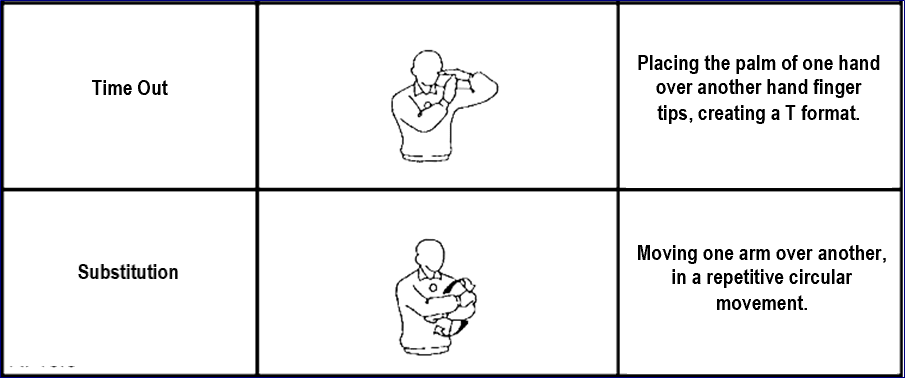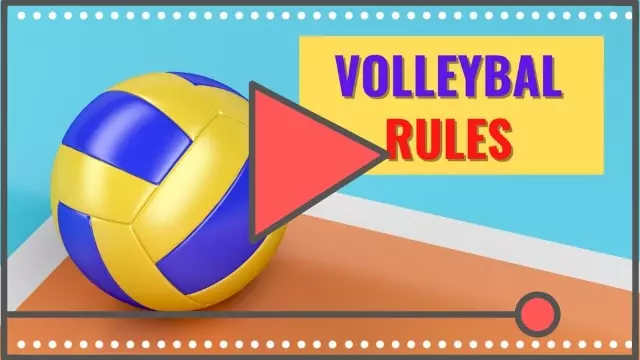Introduction: Volleyball Rules
Studying sports rules is boring, almost no one likes it. But here at “DEF” you’ll find up-to-date content with illustrative images from the Official Indoor Volleyball Rules, capable of answering any questions you have about the Indoor Volleyball Rules.
Volleyball Rules for Beginners
How Big is the Volleyball Court?
The official volleyball court is a rectangle, measuring 18 meters long and 9 meters wide. All lines on the Volleyball court are 5 centimeters wide.
What is the Height of the Official Volleyball Net?
- The official Volleyball net has a height of 2.24 meters for women’s games and 2.43 meters for men’s games.
- The posts are 2.55 meters high and are 0.50 to 1 meter from the sideline.
- The Volleyball net is 1 meter high by 9.50 to 10 meters wide.
- The Volleyball net antennas must be flexible and measure 1.8 meters.
- The antennas are fixed to the net over the court’s sidelines.
- The antenna serves to delimit the area where the ball crosses over the net.
How Many Players Form a Team?
Usually, a complete Volleyball team consists of 12 players, a coach and up to two assistants, a physiotherapist, and a doctor. Yet, 14 players may be recorded on the score sheet, according to the following rules:
- Less than 12 players: possibility of 1 libero.
- 12 players: possibility of 1 or 2 liberos.
- 13-14 players: mandatory of 2 liberos.
The equipment of the players consists of a shirt, shorts, socks and sports shoes. All players must wear equal uniforms except the libero. The shirts will be numbered 1 to 20. Players may wear glasses or contact lenses as long as they are responsible for the risks.
OBSERVATION: The coach and the team captain are responsible for the conduct of their teams. The libero cannot be the captain.
Scoring System
A team scores points when:
- Can make the ball touch the opponent team’s court;
- the opponent team plays the ball off the court;
- the opponent team makes a foul/violation;
- the opponent team is penalized.

What is the Rally?
A Rally is all actions that take place in the game from the moment of contact with the ball on service, until the moment when a team scores a point. Each new service starts a new Rally.
How Many Sets a Volleyball Match Has?
- One official Volleyball match is played in a best of 5 sets (3 winning sets for a team).
- Wins a set the team who first makes 25 points, with a minimal advantage of 2 points.
- In case of a draw in 24 x 24, the set should continue until one of the teams has an advantage of 2 points. Ex.: 26 x 24 or 27 x 25 or 28 x 26.
- Wins the match the first team to win 3 sets.
- In case of a tie in 2 x 2 sets, the 5th set, or Tie Break will be played, until 15 points, with the minimal difference of 2 points.
The Toss, Initial Formation, and Players Positions
Toss
Before the match, a Toss is made to decide who will serve and who will receive the service, and which side of the court each team will be in the first set. In case of a fifth set be required, a new toss will be made.
Initial Formation
Each team will enter the court with 6 players. The initial team formation will also indicate the position of each player, which determines the order of service of the team in the first set.
ATTENTION! The service order determined at the beginning of the set must be maintained throughout the set and can only be changed at the beginning of each set.
Positions and Rotation
- Three players must form the front zone, position 4 (left front), 3 (middle front) and 2 (right front).
- Three players must form the back zone: 5 (left back), 6 (middle back) and 1 (right back).
- After the service, the players can move freely around the court.
How does the Rotation System Work?
The order of the Service Rotation is defined by the starting position of the team in each set.
When a receiving team wins a Rally, gets the right to serve, their players must rotate a position clockwise. The player who was in position 2 (right front) will go to position 1, the player who was in position 1 goes to position 6, the player who was in position 6 goes to position 5 and so on.
Important! The player who was in position 2 and advanced to position 1 will necessarily be the player responsible for the next service.

Rotation Fouls
Rotation foul is when a service is made while the players of a team are out of position. The team that commits the foul of rotation will be punished with a point for the opponent team that will also be entitled to serve.
Ball out of Bounds and Number of Contacts
The ball is considered out of bounds when:
- A part of the ball that comes into contact with the ground is outside of the bounding lines of the court;
- The ball touches any object that is outside of the court;
- The ball touches the antenna, support strings, poles or parts of the net that are outside the playing area.
- The ball completely crosses the space under the net.
Number of Contacts
A team may perform up to 3 contacts before sending the ball to the opponent team. Block touching does not count as a contact.
Four Contacts
The team which makes more than three contacts is committing a foul.
Double Contact
A player may not have two consecutive contacts to the ball. A touch on block does not count as the player’s first contact.
Supported Contact
It is not allowed to use another player or object to hit the ball.
Hold
Is not allowed to hold, throw or push the ball, it has to be struck or hit.
Penetration Over the Net
It’s not allowed to touch the ball on the opponent’s side of the court until he finishes his action of attack.
Penetration Under the Net
Is allowed to penetrate the opponent space under the net, since:
- It doesn’t interfere on the opponent action;
- A part of the foot stays on the central line.
Net Foul
- Any contact with the net, in the space between the antennas, is a foul.
- A player contact with the net, due the net movement after a ball hit on it, is not considered a foul.
- Touching the posts, net fixing cables or any material outside of the space between the antennas, is not considered a foul.
The Service
Service Side and Fouls
- The first service of the first set is defined by toss. On the next sets, until the 4th, the teams will alternate which one will make the first service.
- The next services will be made by the team that wins the Rally.
- The service must always be authorized by the referee.
- The server cannot step on the end line of his court, yet is allowed to land in the court, after performing a jump service.
Attack Fouls:
- Hit the ball on the opponent’s playing space (another side of the net)
- When a back-row player (positions 5, 6 1) hits the ball when it is above the top of the net, taking off (feet) from the front zone.
- Is not allowed to attack the opponent’s service.
- The Libero hits the ball above the top of the net.
- If the Libero is in the front zone and sets the ball, using both hands above his head (setting), his teammates may not hit the ball above the top of the net.
Block Fouls:
- To block the opponent’s service.
- Touch the ball before the opponent finishes his attack action.
- A back-row player or the libero attempt to block.
- Block the ball outside from the space between antennas.
Time Out and Substitutions
Each team is entitled to two time-outs and 6 substitutions per set. The time out request may be made by the coach or by the team captain.

Breaks and Side Changes
According to Volleyball rules the break between sets is 3 minutes long. During the break teams change sides on the court, except in the Tie-Break. In Tie-Break, the sides are changed without a break when the first team reaches 8 points.
The Libero Rules
- Each team can only have 1 Libero playing in court at a time;
- The Libero must wear a uniform with a dominant color different from the other players on his team.
- The Libero cannot serve, block, attempt to block or attack the ball when it is above the top of the net.
- The libero can only replace back-row players (positions 5, 6 and 1)
- If the Libero is in the front zone and sets the ball, using both hands above his head (setting), his teammates may not hit the ball above the top of the net. If the libero standing in the front zone uses a dig to set the ball, the attack can be performed normally.
- In the back zone, the libero can perform setts in any way.
MORE VOLLEYBALL CONTENT
- The Volleyball Court
- Volleyball History
- All Volleyball Rules for liberos
- Volleyball Fundamentals
- Volleyball Tactics
- Volleyball Positions
- Volleyball Rotations

